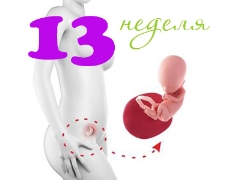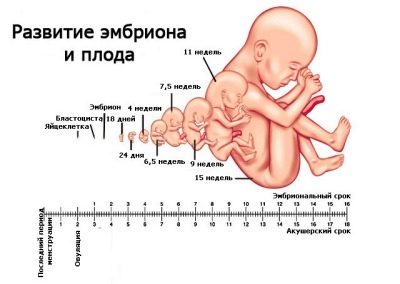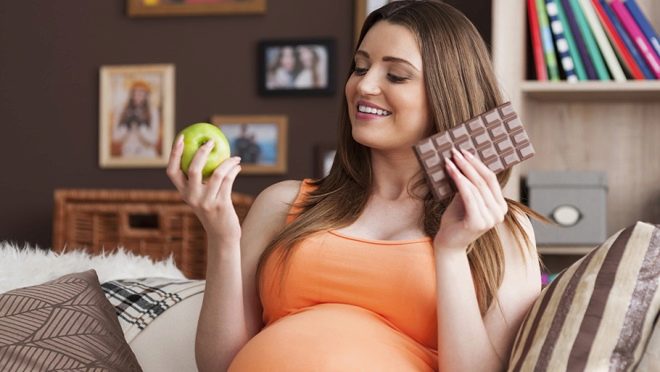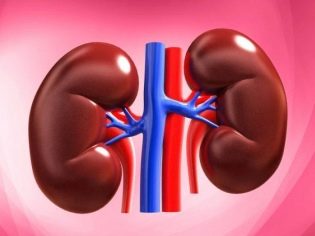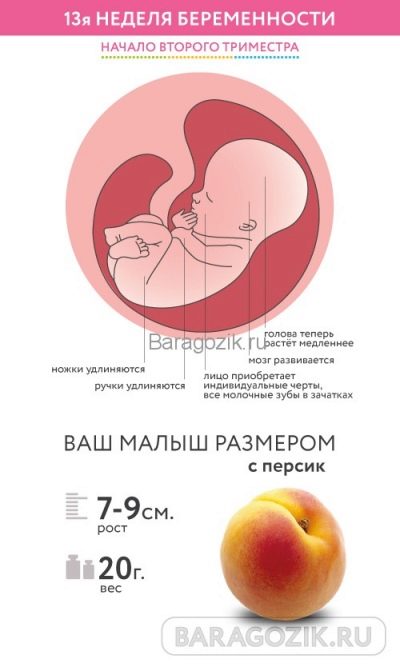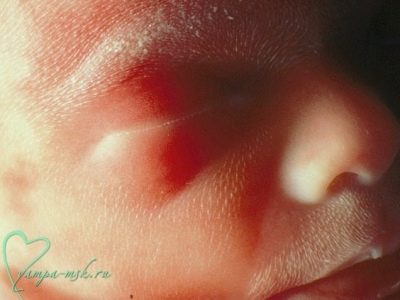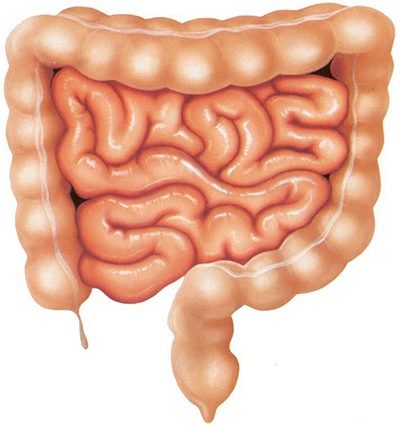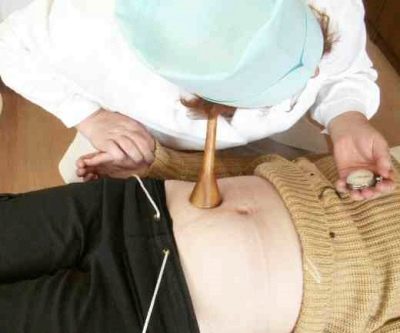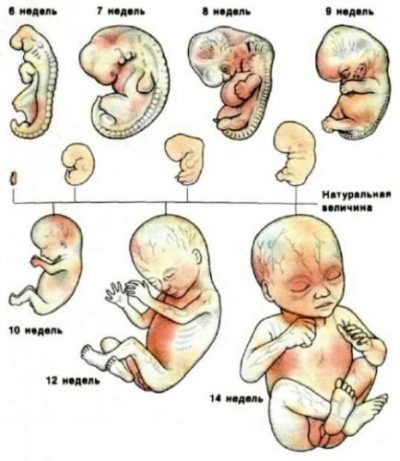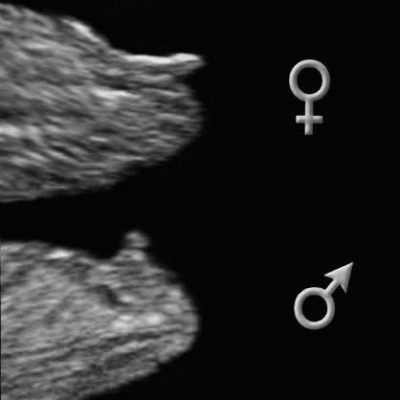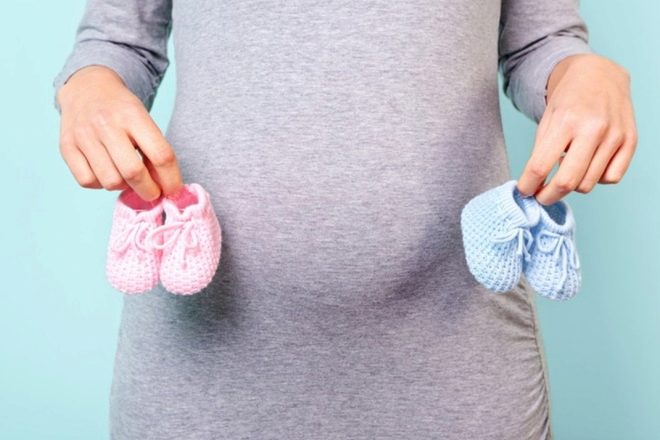Fetal development in the 13th week of pregnancy
Every day the baby’s intrauterine life is a truly unique event. In the body of a little man, very important transformations take place.
What happens to the child?
By the beginning of the second trimester of pregnancy, the child, who is in my mother's tummy, is already quite formed. Many of its internal organs have already begun to function. 13 obstetric week is the first week of the second trimester of pregnancy.
The baby is in the enlarged uterus, which takes up quite a lot of space in the pelvis. Every day the size of this reproductive organ only continues to increase. As the baby grows, the first specific sensations of his mother begin to appear.
The baby has a larynx and vocal cords begin to form. These organs are called voice-forming, as they are involved in the formation of sounds. The baby can really use them in the first minutes after its birth, when it makes its first sound.
The child has the first taste sensations. The baby can feel the flavors of the amniotic fluid. It can be sweetish, salty, or even bitter. This is largely influenced by the fact that the mother eats the baby. There are studies showing that the first taste preferences in humans are formed during the period of prenatal life and significantly depend on the diet of the mother during pregnancy.
Swallowing amniotic fluid in this period of fetal life of the child is an absolutely physiological phenomenon. Thus, the urinary system develops. Baby swallows a little amniotic fluid, and then allocates it. This is the development of the kidneys and urinary tract.
The main parameters of the body of the fetus
The child of this prenatal age is still quite small. In size, it resembles an average peach. Doctors use several parameters to assess body parameters, the main of which are presented in the table below.
Clinical parameter | Norm at 13 weeks gestation |
Body length | 80 mm |
Weight | 20-30 grams |
By 12-13 weeks of its prenatal development, the child already has a real “human” look. He has a slightly extended body. At the same time, the arms and legs are disproportionate to the head. The baby can be distinguished individual features. A child at that time looks even funny. The line of the chin and nose becomes more delineated. The child can already grimace and smile. He makes these active movements still unconsciously. The formation of conditioned reflexes will occur in the baby a little later.
The child's hair appears on the body of the child. They are located in places where eyebrows and cilia will grow in the future. Downy hairs located in the chin area and above the upper lip, as well as on the head. From the 13th week of pregnancy, the baby's forehead begins to form and change, and the cheeks and nose gradually move forward. Sweat glands begin to appear on the child’s body.
The skin of the baby is still quite transparent.Blood vessels are clearly visible through them. Over time, the color of the skin will change and take on a more "healthy" physiological appearance.
Internal organs
Active changes occur in the secretory organs. The pancreas begins to function gradually. The cells that make it up, start to release a little insulin - one of the most important hormones necessary for the utilization of glucose in the body.
The thyroid gland of the baby also begins to gradually produce its hormones. Iodine is necessary for the normal development of this organ, since it is an integral part of hormones.
It is very important that a pregnant woman at this time consumed a sufficient amount of iodine. She usually gets it by taking a multivitamin complex prescribed by her doctor.
The intestines are actively developing. The first cuts appear in it, which doctors call peristalsis. Of course, the intestines will truly function after the baby is born and when they eat food, but the first manifestations are already noticeable at this stage of the intrauterine development of the child. Small villi appear in the intestines, which are necessary for the digestion of food.
By the 13th week of pregnancy there were very serious changes in the baby’s circulatory system. So, the children's heart already consists of four chambers and pumps about 23 liters of blood per day.
The little heart is already really beating. To determine the assessment of the work of the baby's heart activity, doctors use a heart rate calculation (HR). This indicator is usually determined during ultrasound. The rate of heart rate for babies of this fetal age is presented in the table below.
Heart rate | Normal values (beats per minute) |
Heart rate | 140-160 |
Musculoskeletal system
By the time of his prenatal development, the baby has already formed quite well enough limbs. There are already fingers on each handle and leg, and the big fingers are usually longer. Some kids start to touch their face with their fingers, turning this activity into an exciting game. Interestingly, each small finger of the baby already has its own unique skin pattern. The child continues to actively develop joints. At 13 weeks, the baby can already move the arms and legs. Twins are beginning to actively "study" each other, touching the body of a brother or sister. Some babes love to play with their umbilical cord.
At this period of prenatal life, the baby has the beginnings of mammary glands. Gradually the bone tissue of the ribs begins to form. For optimal development of the musculoskeletal system of the baby, it is necessary to have sufficient calcium intake into his body.
This must be remembered by the child’s mother. A pregnant woman at this stage of pregnancy should include in her diet more fermented milk products.
Nervous system
The child is improving committed active movements. So they become more orderly and coherent.
Active changes occur in the nerve analyzers. Kids can "hear" mother's and father's voice and even react to them. The future mother cannot yet notice such changes, since the child is still quite small. However, it is already possible to start talking with the baby, as it has a positive effect on the formation of the emotional connection between the mother and her child.
Sex determination
At this stage of pregnancy in babies active changes occur in their reproductive system. In girls, for example, eggs begin to appear - female germ cells. At the same time, their ovaries are in the pelvis. The genital tubercle is transformed into the clitoris.
Boys gradually form a penis and prostate gland. These sexual characteristics make it possible to determine the sex of the child during the ultrasound. But, learn about the appearance of a boy or girl in 100% of cases will not work. If the baby is too small or is in an “uncomfortable” position for the examination, then it will simply not be possible for the ultrasound specialist to see the floor.
Many mothers who are in a hurry to find out the sex of their baby resort to different ways of determining it. They are trying to determine heartbeat sex child, in the form of the abdomen, according to various national signs. It should be noted that all these methods are only indicative, but not absolutely accurate. It is possible to find out the sex of a child quite accurately at the 20th week of pregnancy, when the external genitals become well distinguishable.
How the fetus develops at the 13th week of pregnancy, see the next video.
